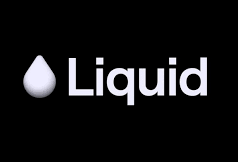Solana (SOL) is making waves in the crypto world, and the buzz is louder than ever. With its price hovering around $149 as of July 17, 2025, and a recent 8% dip shaking things up, Solana’s ecosystem is showing signs of a potential breakout. A new development is fueling the hype: multi-exchange liquid staking, spearheaded by platforms like Coinbase, Kraken, and Liquid Collective. This innovation, combined with growing institutional interest and technical bullish signals, could propel SOL toward the $185 resistance level—or even higher. Let’s dive into what’s driving Solana’s price potential, why multi-exchange staking matters, and what’s next for this high-speed blockchain.
Solana’s Meteoric Rise: The Context
Solana has been a standout in the crypto market, thanks to its lightning-fast transactions, low fees, and thriving ecosystem of decentralized finance (DeFi), NFTs, and real-world asset (RWA) tokenization. Despite a recent 7.84% drop to $145.08 on July 1, 2025, SOL has shown resilience, with support emerging at $146.55 and institutional inflows pouring in. The network’s staking value recently surpassed Ethereum’s, hitting $54 billion compared to ETH’s $53 billion, with 65% of SOL’s circulating supply locked in staking. This milestone, coupled with a new liquid staking token (LsSOL) and the impending launch of Solana-based exchange-traded funds (ETFs), is setting the stage for a potential rally.
So, what’s the big deal about multi-exchange staking, and how could it push SOL’s price to new heights? Let’s break it down.
What Is Multi-Exchange Staking?
Staking is a cornerstone of Solana’s Proof-of-Stake (PoS) blockchain, where users lock up SOL to support network security and earn rewards, typically ranging from 6.5% to 12% annual percentage yield (APY). Traditionally, staking meant locking tokens in a validator or stake pool, with a 2-3 day “cooling off” period for unstaking, limiting liquidity. Enter liquid staking, which lets users stake SOL and receive a liquid staking token (LST) like JitoSOL, mSOL, or the new LsSOL. These LSTs can be traded, used in DeFi protocols, or held to accrue staking rewards, offering flexibility without sacrificing yield.
The game-changer is multi-exchange liquid staking. Liquid Collective, in partnership with major players like Coinbase, Kraken, Galaxy, Anchorage Digital, and Fireblocks, recently launched LsSOL, a liquid staking token designed to cater to institutional and retail investors alike. This service allows users to stake SOL across multiple trusted platforms, earning rewards while maintaining liquidity. Unlike native staking, where tokens are locked, LsSOL can be traded or used in DeFi, making staking more accessible and appealing to a broader audience.\
Why Multi-Exchange Staking Could Boost SOL’s Value
Here’s why this new staking model is turning heads and could drive SOL’s price toward $185 or beyond:
- Increased Institutional Demand: The launch of LsSOL comes at a time when institutional interest in Solana is soaring. The REX-Osprey SOL + Staking ETF, set to debut on July 2, 2025, will allocate 50% of its SOL holdings to staking, offering investors direct exposure to SOL’s price and staking rewards. With nine firms, including Grayscale, VanEck, and Bitwise, racing for SOL ETF approvals, and CME futures volumes hitting all-time highs, institutional capital is flooding in. Multi-exchange staking lowers the barrier for institutions to participate, as platforms like Coinbase and Kraken handle the technical heavy lifting, potentially driving up demand for SOL.
- Supply Squeeze from Staking: With 66.55% of SOL’s circulating supply (356.9M tokens) already staked, valued at $61.9 billion, the network is seeing a significant portion of tokens locked up. Multi-exchange staking could push this figure higher by making staking more user-friendly. As more SOL gets staked, the liquid supply on exchanges shrinks, creating upward price pressure. This dynamic mirrors Ethereum’s recent rally, where 29% of ETH staked contributed to a supply squeeze.
- Higher Staking Yields and MEV Boosts: Solana’s staking APY has climbed to 11.8% in recent months, driven by rising transaction fees and maximal extractable value (MEV) revenue. MEV refers to the extra profits validators earn by reordering or prioritizing transactions. Platforms like Jito, which powers many liquid staking pools, share MEV tips with stakers, boosting yields by 20-30%. LsSOL’s multi-exchange model could amplify this by delegating to high-performing validators, attracting more stakers and increasing network activity, which further supports SOL’s value.
- Technical Bullish Signals: SOL’s price action is screaming bullish. It recently completed an inverse head-and-shoulders pattern, breaking above $159 and flipping it to support. The 20-day exponential moving average (EMA) is trending upward, and the relative strength index (RSI) is nearing overbought territory, signaling strong momentum. If SOL holds above $168, analysts predict a climb to $185, with $210 in sight if resistance breaks. However, a drop below moving averages could see SOL test $144 or $137, so volatility is a factor to watch.
- DeFi and RWA Momentum: Solana’s ecosystem is thriving, processing 111 million transactions daily—three times the volume of all other chains combined. Its DeFi and RWA sectors are exploding, with platforms like Raydium, Jupiter, and Drift driving adoption. Multi-exchange staking integrates seamlessly with DeFi, as LSTs like LsSOL can be used in yield farming, lending, or liquidity pools, boosting SOL’s utility and demand.
Risks to Watch
No rally comes without risks, and SOL’s path to $185 isn’t guaranteed. Here are some potential roadblocks:
- Market Volatility: SOL’s recent 8% drop shows it’s not immune to swings. If broader market sentiment turns bearish or regulatory hurdles delay ETF approvals, SOL could face selling pressure.
- Slashing and Validator Risks: While Solana’s slashing is rare and not automatic, staking with a malicious or underperforming validator could reduce rewards or, in extreme cases, lead to losses. Choosing reputable validators via platforms like Solana Compass or StakeWiz is key.
- Liquidity Risks with LSTs: Liquid staking tokens can de-peg from SOL’s price during market turbulence, causing losses when converting back to SOL. Smart contract vulnerabilities in staking protocols also pose risks.
- Centralization Concerns: Large exchanges like Coinbase and Kraken running validators could concentrate stake, reducing Solana’s decentralization. Opting for non-custodial wallets like Phantom or Solflare gives users more control.
How to Get Started with Multi-Exchange Staking
Ready to stake SOL and ride the potential rally? Here’s a step-by-step guide:
- Choose a Platform: Use trusted exchanges like Coinbase, Kraken, or Crypto.com, which support LsSOL and liquid staking. Non-custodial wallets like Phantom or Solflare also integrate with liquid staking protocols like Jito or Liquid Collective.
- Fund Your Wallet: Buy SOL on an exchange or transfer it to your wallet. Bitget, for example, offers instant trades across 200+ SOL pairs.
- Stake Your SOL: On Coinbase or Kraken, navigate to the “Earn” or “Stake” tab, select SOL, and choose a liquid staking option to receive LsSOL. With Phantom, you can stake directly with Jito or Marinade for tokens趣味
- Monitor Rewards: Staking rewards are distributed every epoch (2-3 days) and automatically compound for native staking. For liquid staking, your LST’s value grows with rewards.
- Stay Informed: Use tools like Solana Compass or StakeWiz to track validator performance and optimize yields.
- Unstake Flexibly: With LsSOL, you can trade or use your tokens in DeFi anytime. Native staking requires a 2-3 day unbonding period.
What’ll SOL do next?
Analysts are bullish on SOL’s price potential. If it breaks $185, the next target is $210, with some predicting $300 by Q3 2025, driven by ETF approvals and DeFi growth. However, a failure to hold $168 could see SOL dip to $144 or lower. The MACD indicator shows diminishing bullish momentum, so a pullback is possible if buyers don’t step in.
Multi-exchange staking could be the catalyst that tips the scales. By making staking more accessible and liquid, it’s drawing in both retail and institutional investors, potentially locking up more SOL and boosting demand. The SEC’s recent stance that native staking isn’t a security also paves the way for staked SOL ETFs, further fueling adoption.
Final Thoughts: Is SOL Ready to Moon?
Solana’s price potential is brighter than ever, and multi-exchange liquid staking could be the spark that ignites a rally to $185 or beyond. With institutional inflows, a shrinking token supply, and a thriving DeFi ecosystem, SOL is well-positioned for growth. But crypto’s a wild ride—volatility, validator risks, and regulatory uncertainties could shake things up.
If you’re holding SOL, staking via platforms like Coinbase, Kraken, or Phantom’s LsSOL integration lets you earn 6.5-12% APY while keeping your assets liquid. For those eyeing the rally, watch the $168 support and $185 resistance levels closely. Whether you’re a DeFi degan or a long-term HODLer, Solana’s multi-exchange staking is a compelling reason to jump in.



























